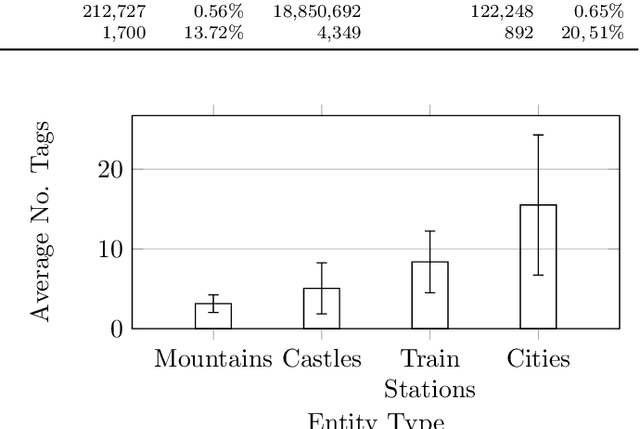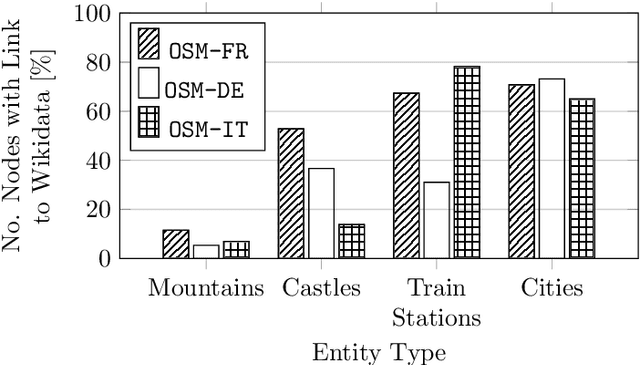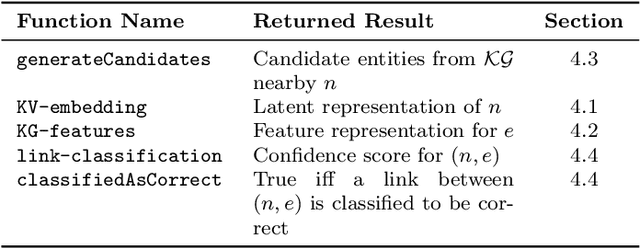Linking OpenStreetMap with Knowledge Graphs -- Link Discovery for Schema-Agnostic Volunteered Geographic Information
Paper and Code
Nov 06, 2020



Representations of geographic entities captured in popular knowledge graphs such as Wikidata and DBpedia are often incomplete. OpenStreetMap (OSM) is a rich source of openly available volunteered geographic information that has a high potential to complement these representations. However, identity links between the knowledge graph entities and OSM nodes are still rare. The problem of link discovery in these settings is particularly challenging due to the lack of a strict schema and heterogeneity of the user-defined node representations in OSM. In this article, we propose OSM2KG -- a novel link discovery approach to predict identity links between OSM nodes and geographic entities in a knowledge graph. The core of the OSM2KG approach is a novel latent representation of OSM nodes that captures semantic node similarity in an embedding. OSM2KG adopts this latent representation to train a supervised model for link prediction and utilises existing links between OSM and knowledge graphs for training. Our experiments conducted on several OSM datasets as well as the Wikidata and DBpedia knowledge graphs demonstrate that OSM2KG can reliably discover identity links. OSM2KG significantly outperforms both na{\i}ve baselines and state-of-the-art link discovery approaches and achieves up to 22.45 percent points increase in F1 score compared to the best performing baselines.
 Add to Chrome
Add to Chrome Add to Firefox
Add to Firefox Add to Edge
Add to Edge